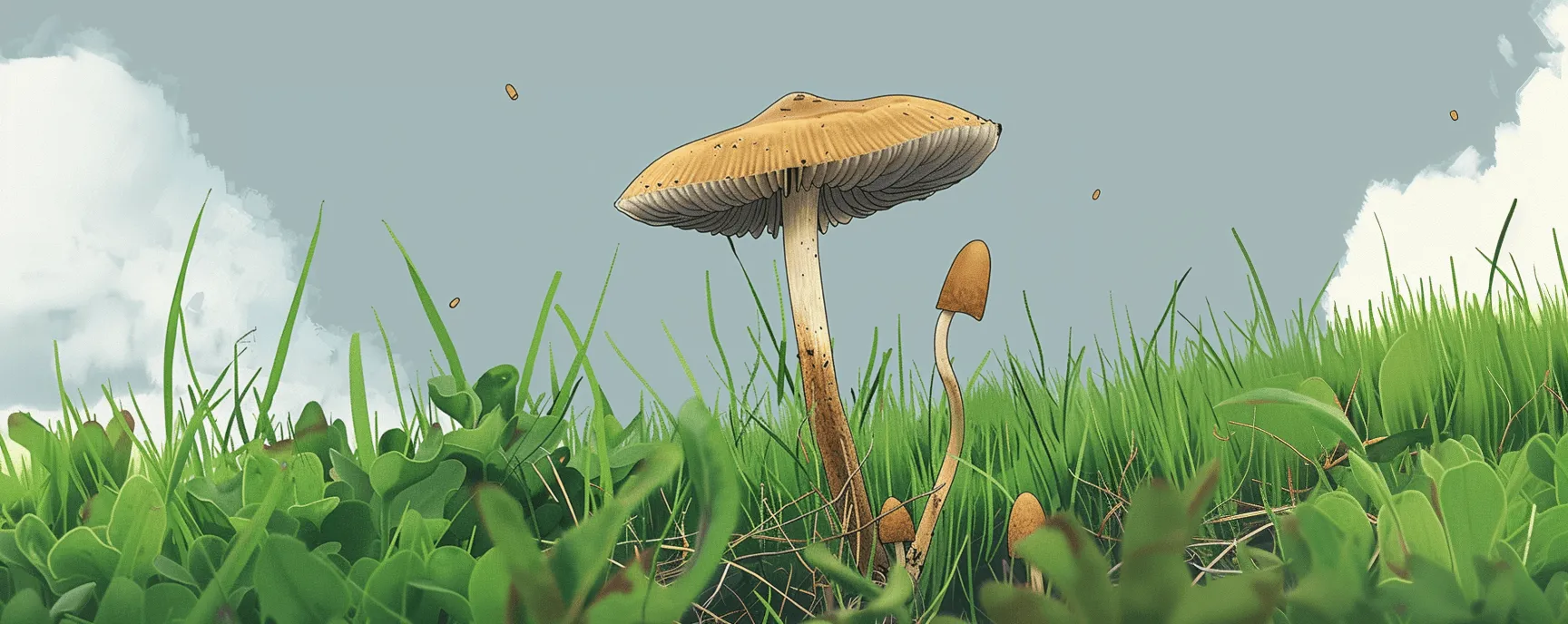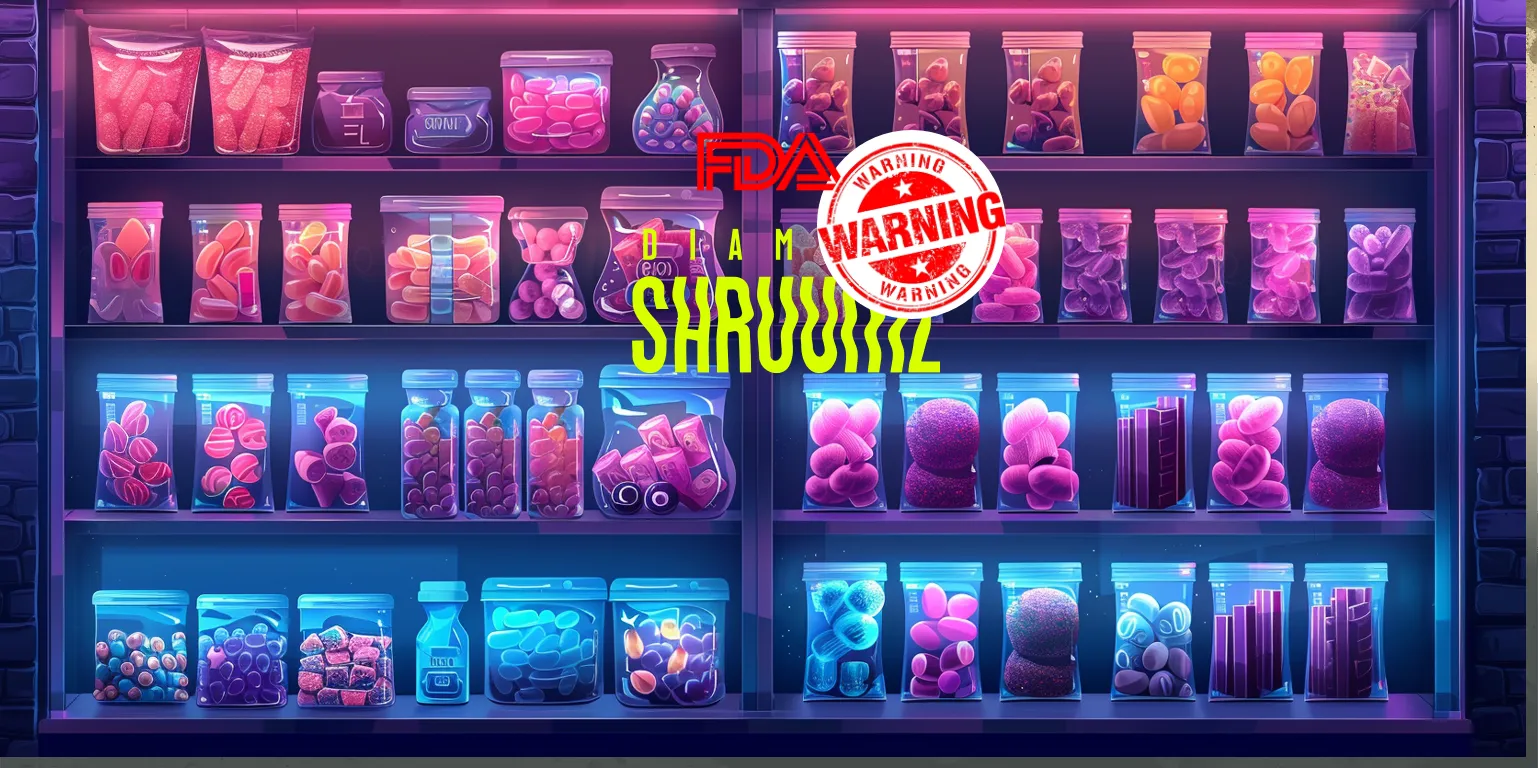Arecent study conducted by Columbia University Mailman School of Public Health and Columbia University Irving Medical Center estimated that 5.5 million Americans had taken hallucinogens in 2019. Additionally, 2021’s Global Drug Survey reviewed answers from 32,000 drug users across the globe, and found that roughly 32% of those surveyed worldwide had used substances like LSD and psilocybin, while approximately 44% had used MDMA at least once. These numbers may seem impressive, but they simply support the astronomical results from a 2013 study showing that 30 million Americans have tripped on psychedelic drugs.(1, 2, 3, 4)
That said, taking psychedelics is not like popping an Advil. A host of factors can affect your odds of having a safe and rewarding experience. We spoke to some experts to ensure that — whether you’re tripping on a psychedelic to heal, reflect, or step into a wider realm for a moment — you can take-off and land with as few bumps as possible.
Here are 10 tips to create safety when you trip on psychedelics.
1. Preparing for Your Psychedelic Experience
“I think it’s so important for the person to be ready. They need to be doing it [a trip] for reasons that feel grounded and authentic,” says integrative holistic psychotherapist Rebecca Hendrix, who is trained in both ketamine and MDMA-assisted therapy.(5)
Keep Up with Uncensored Psychedelic Trends
Join our newsletter at Psychedelics Uncensored.
We respect and protect your privacy. By subscribing your info will be subject to our privacy policy . Unsubscribe easily at any time
She cautions that there are still many things to consider before engaging with psychedelics, and to put the generally positive news emanating from the media regarding psychedelics – or from friends – in context. “It’s increasingly the case that someone knows someone who had an amazing journey,” she says. “It’s okay for the seed to be planted by another person, but psychedelic healing is a long-term experience. It’s before, during, and after the trip. It’s not a shortcut or one-off.”
You should also consult with a physician if you suffer from a medical condition, always. Some evidence suggests that MDMA may interfere with SSRI medications, for example. (This has been linked to a serotonin toxicity condition called ‘serotonin syndrome.’) Ayahuasca facilitators will frequently request that people wean off SSRIs before sitting in ceremony, as aya also impacts serotonin (as do most classical psychedelics). Some psychedelics are not recommended for individuals with certain conditions. If you are pregnant, have a personal or family history of psychotic or neuropsychiatric disorders, high blood pressure, or are taking MAOIs it is imperative to speak with your health care provider prior to trying psychedelics. It’s also not advised to mix psychedelics with alcohol or other drugs (including other psychedelics). Do show caution, and avoid potential interactions.(6, 7, 8, 9)
If you’re ready to journey with a psychedelic substance, here are some tangible things you can do to prepare:
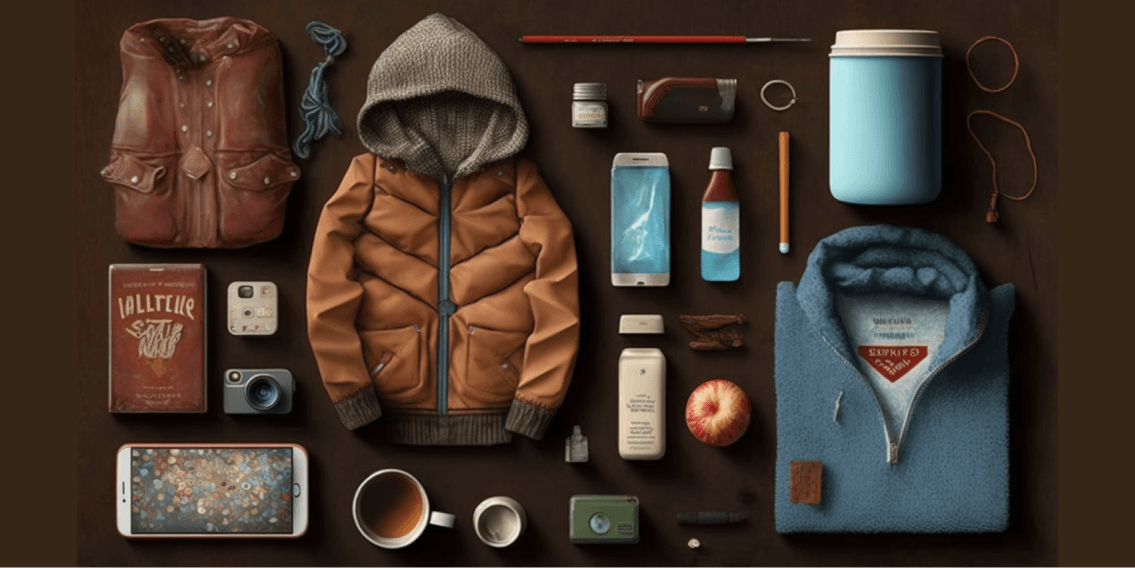
It’s also a good idea to have a friend or loved one along for the ride. This person, sometimes called a tripsitter, is there to help you through any potentially challenging moments of your psychedelic experience (more on this below). They can also be a great source of conversation, entertainment, and fun. Your tripsitter may also be able to ensure that you don’t do anything reckless (like hopping in a car after taking a hit of LSD). Having a fellow (sober) psychonaut nearby can also bring peace of mind, and help you feel more comfortable with the experience.
2. Testing Your Psychedelics
Whatever psychedelic you’re taking, testing is crucial – especially if you’re sourcing from a new provider.
At-home reagent test kits will help you ascertain whether the substance you’re seeking to take is legitimate. This can be really important with LSD blotters, says Adam Waugh, trustee and coordinator of Psycare, an organization that provides welfare and harm reduction services at festivals.(10, 11)
Keep Up with Psychedelic Trends
Get uncensored psychedelic news, events, and updates. Join Psychedelics Uncensored!
We respect and protect your privacy. By subscribing your info will be subject to our privacy policy . Unsubscribe easily at any time
“LSD blotters (aka tabs) can be mis-sold, [when they are in fact] research chemicals like the NBOMes or the DOx series,” Waugh says. These are highly potent, long-lasting psychedelic amphetamines with much higher danger potential than LSD.(12, 13)
Testing is also vital when tripping with ketamine or MDMA. In 2021, nearly half of samples tested at English festivals contained no actual MDMA. Instead, synthetic cathinones like 3-CMC, 3-MMC, or Eutylone were often used as substitutes. These are highly stimulatory substances. Eutylone in particular (with its short-lived MDMA-like effects that encourage re-dosing) is linked with 24-hour trips and drug-induced psychosis. Remember: test is best.(14, 15)
3. Dosing Psychedelic Substances*
Dosage is a nuanced area. Your experience, body type, and intention are all crucial factors. With psychedelics, there are broadly five categories of dose:(16, 17, 18)
(Note: This information was gathered from multiple sources such as the Erowid Center, Multidisciplinary Association for Psychedelic Studies, and the Journal of Psychopharmacology, some of which may be anecdotal in nature.)
Psilocybin
Psilocybin (aka magic mushrooms), have been in use for thousands of years. As one of the oldest known psychedelics, there is a wealth of information available regarding proper dosing. Generally speaking, you should start with a lower dose, between .5 and 1.00 gram, before exploring higher doses. Psilocybin is typically considered to have an organic feeling associated with the psychedelic experience. This may include pleasant body highs, euphoria, as well as visual and auditory hallucinations (at higher doses). However, the trip can become much more intense when taking significant doses such as a heroic dose. At this level, you may transcend the body and mind, experiencing something known as ego death (the disillusionment of your sense of self or personhood). Psilocybin trips usually last between six to eight hours, and are anecdotally known to have a relatively gentle comedown.(19, 20)
| Psilocybin Dosing:(20, 21) | (measurements based on dried mushrooms) |
| Microdose: | 0.05g to 0.25g |
| Minidose: | 0.25g to 0.75g |
| Museum dose: | 0.5g to 1.5g |
| Moderate dose: | 2g to 3.5g |
| Mega (or ‘Heroic’) dose: | 3.5g to 5g |
You can expect incrementally elevated effects with each increase, which will reduce your ability to function normally. It should be noted the mega/heroic option is only for very experienced users who know their way down the cosmic highway.
(This information was gathered from a variety of anecdotal and community sources.)
LSD
Lysergic acid diethylamide (LSD), also called acid, is another member of the classic family of psychedelics. Like psilocybin, it is known to produce visual and auditory hallucinations. However, the two drugs are quite different in intensity and duration, with LSD lasting up to 12 hours (anecdotal reports even indicate instances of 18 hour trips). LSD generally causes feelings of euphoria, detachment from one’s sense of self, and visuals that include brightly colored geometric patterns and moving shapes. One may also experience a pronounced increase in the appreciation of music, higher levels of energy, synesthesia (such as seeing sounds), and a markedly raised sense of touch. A very high dose of LSD can also cause ego death. Like psilocybin, LSD is a popular choice for the practice of microdosing (taking sub-perceptual doses), which is purported to enhance creativity, mental acuity, and performance.(23)
| LSD Dosing:(20, 21) | (µg = microgram, 1/1,000,000th of a gram) |
| Microdose: | 5µg to 20µg |
| Minidose: | 20µg to 50µg |
| Museum dose: | 50µg to 100µg |
| Moderate dose: | 100µg to 200µg |
| Mega (or ‘Heroic’) dose: | 200µg to 300µg |
Always start with a lower dose of a potent hallucinogen like LSD. This is particularly important given how small LSD doses are (measured in micrograms). It is very easy to accidentally take too much, and have a more challenging experience than you may have intended. You should also be cognizant of your set and setting. Taking these into account can help you to have the best psychedelic experience possible.
MDMA
MDMA (more widely known as molly and ecstacy) is a powerful empathogen and entactogen. This means that it increases feelings of empathy, love, self-awareness, and closeness with other people. MDMA also increases sociability, raises energy levels, and creates a sense of euphoria that may include a body high that includes feelings of “floatiness.”(24)
Sometimes known as the “love drug,” MDMA is currently undergoing clinical trials as a possible treatment for post-traumatic stress disorder (PTSD) and depression. Like any psychedelic drug, it’s a good idea to start slow, taking a smaller amount before trying out any larger doses. As the saying goes, “you can always take more, but you can’t take less.”(25)
| ORAL MDMA Dosing via MAPS: | With MDMA, the MAPS-recommended guidance on dosing for their research studies is as follows:(26) (mg = milligram, 1/1,000th of a gram) |
| Low dose: | 25 mg, followed by 12.5 mg two and a half hours later (total dose of 37.5mg). |
| Full dose: | 125 mg, followed by 62.5 mg two and a half hours later (total dose of 187.5mg). |
| Oral MDMA Dosages from the Erowid Center:(27) | The Erowid Center (a nonprofit educational organization founded in 1995) offers additional dosing information: |
| Threshold Dose: | 30 mg |
| Light Dose: | 40 – 75 mg |
| Common dose for small or petite individuals: | 60 – 90 mg |
| Common dose for the average person: | 75 – 125 mg |
| Common dose for larger individuals or those with a high tolerance: | 110 – 150 mg |
| Strong Dose: | 150 – 200 mg |
| Heavy/Heroic: | 200 + mg |
(Safety Note: It is never a good idea to take more than 150mg of MDMA at one time. High doses increase the risk of negative side effects such as hypertension, hyperthermia, tachycardia, nausea, vomiting, short term memory loss, and others. This is supported by literature from multiple sources including MAPS, the Erowid Foundation, and the Journal of Psychopharmacology.)
Most clinical trials follow similar dosing methods as the shown above. For example, a Phase II clinical trial utilizing MDMA as a treatment for PTSD followed this dosing regimen:(25)
| MDMA Phase II Clinical Trial Dosing: | |
| Low Dose: | 30 mg MDMA, followed by a supplemental dose of 15 mg MDMA 1.5 to 2 hours later |
| Medium Dose: | 75 mg MDMA, followed by a supplemental dose of 37.5 mg MDMA 1.5 to 2 hours later |
| High Dose: | 125 mg MDMA, followed by a supplemental dose of 62.5 mg MDMA 1.5 to 2 hours later |
Remember, some research suggests MDMA may have higher stimulatory properties than LSD or psilocybin. This could increase your chances of overheating, so always veer on the side of caution with dosing. Sip water carefully, and if you find yourself getting too hot, move to a cooler area to allow your temperature to come down.(28)
DMT
Blasting off with DMT? This can be brewed as ayahuasca, freebased as DMT powder, smoked as changa (a herbal mix containing the substance), or vaped. It’s highly recommended you only take an ayahuasca trip under the guidance of an experienced and pre-vetted facilitator. DMT, on the other hand, is short-lived (half hour, tops) but it’s a wildly intense ride.(29)
| DMT Dosing: | Smoked/Vaporized DMT Dosing:(30) |
| Low Dose: | 2 – 5 mg |
| Light Dose: | 10 – 20 mg |
| Common Dose: | 20 – 40 mg |
| Strong Dose: | 40 – 60 mg |
Smoking DMT can be an incredibly powerful, and often mystical experience. It is likely a good idea to proceed with caution, and make sure you are prepared for this sort of psychedelic experience. People who have smoked DMT often report having full-on hallucinogenic experiences where they feel that they’ve left their corporeal body. Often they meet extradimensional beings that some feel are divine in nature, or wise guiding spirits.(31)
Psychedelic science writer Nick Hilden interviews DMT expert Dr. Rick Strassman about these mystical experiences and the power they hold.
4. Going Slow With Psychedelic Drugs
Whether you’re solo tripping at home or in nature with friends, going slow is always the way. “I would really encourage people to be patient,” says Waugh. “People often think they aren’t really feeling anything – then get up to go to the toilet and suddenly realize they’re tripping.”
Do the walls or trees seem more static than you’d like? Don’t be tempted to take another bite of the psychedelic apple. “What you don’t want to do is take a second dose, have the first kick in, and suddenly you’re thinking, ‘I’m actually tripping quite hard now.’ And then an hour later it’s more than you can handle,” says Waugh.
Redosing early can also have serious health ramifications if you’ve been mis-sold an (N-Benzyl Phenethylamine) NBOMe. “They often won’t affect a person so quickly, and if you took a second or third dose there’s a reasonably high chance you would come to harm,” Waugh cautions. Emphasizing that NBOMes can also cause Hallucinogen Persisting Perception Disorder, where flashbacks or visual distortions can last for weeks or months post-trip.(32)
5. Get “Set”
The concept of “set and setting” was popularized by the 1960s LSD evangelist Timothy Leary, and is now seen as a crucial facet of any successful psychedelic experience. The first portion – ”set” – broadly means making sure you are mentally and physically prepared for a trip less ordinary.(33)
“It’s important to ask yourself: ‘Am I well-rested? Have I been looking after myself for the past few days? Am I going through a difficult period or have I recently experienced a trauma?’ If someone is prone to anxiety then they are more prone to feel anxious on a psychedelic,” says Waugh.
If you have a specific intention – from a long-standing trauma to a nagging work problem – think about this beforehand. Discuss it with your fellow trippers, tripsitter, or therapist, but don’t expect a magic wand. Also, don’t stress if your first time doesn’t go as expected.
“That first journey there can be so much stuff going on. You can be resisting or not have the correct dose. You could have slept badly the night before,” says Hendrix.
Other ways to help establish your “set” before your psychedelic experience include doing yoga, meditating, taking time to reset your mind, or otherwise just relaxing before your trip. Things like taking a walk, a warm bath, or even simply reading a favorite book can all help you to prepare yourself mentally. Essentially, just do things that you enjoy, and which help you feel centered.
6. Setting
While ”set” is perhaps a more nebulous term, “setting” is clear as water. Is your trip happening somewhere you will feel comfortable, relaxed, and safe? “If someone is intending to try psychedelics for the first time, or is taking a high dose, I think home is the best environment,” Waugh says. “Though lots of people choose to take them in nature.”
There are some things you can do to create a more positive setting for yourself. Start with making sure you are in a place where you feel comfortable and supported. Having some touch stones, like a favorite blanket, can help you feel safe and prepared for your trip. It’s also a good idea to have a curated playlist of your favorite music. Songs that are uplifting, empowering, and peaceful can improve the psychedelic experience and make everything much smoother. As mentioned, it’s also critical to go into your journey with a positive mindset. If there are things that are making you unsure of whether or not to trip, it may be best to wait.
There are increasing numbers of retreats, healing centers, and clinical ketamine clinics. Absorb their literature, seek recommendations, and take part wholeheartedly in any pre-visit preparatory sessions. And don’t forget: you can change your mind and not take the medicine if the vibe isn’t right.
Psychedelics and music festivals also have a symbiotic history stretching back to Woodstock and the infamous “brown acid” that was apparently causing some less-than-cosmic trips. Should a curious first-time tripper take their journey here? ”I think events like music festivals can be a bit overwhelming for someone that isn’t too familiar with psychedelics as there are lots of crowds and stimulation,” says Waugh.
7. Finding a Tripsitter for Your Psychedelic Journey
A sober tripsitter can be an essential companion on your journey into hyperspace. “The best harm reduction advice is to have a sitter with you. If there are two people both tripping, then they can get stuck into loops,” says Waugh.
The sitter’s role is simply to hold space and offer gentle support if necessary. Any other criteria? Waugh says they should be someone you trust implicitly and have no tensions with. Also, “it’s important that whoever is sitting has some psychedelic experience themselves. Just so they can understand what the tripping person/people are going through,” he thinks.
If you’re seeking a sitter for a specifically spiritual or healing journey, ask questions about their methods and meet in person beforehand. Specify boundaries, especially around physical contact. Look out for red flags, and anyone promising miracle cures for mental health ailments should be handled with extreme caution.
Can’t find a trip buddy? Try an organization like Fireside Project who offer peer-to-peer phone support for people going through psychedelic experiences.(35)
8. How To Handle a “Bad Trip”
As anyone who’s been to Barbados with their in-laws knows – the best trips can go bad. But what can we do if a psychedelic experience starts going sour?
Changing the environment can have a real impact on how the trip develops,” says Waugh. Adding, “Being indoors can feel quite oppressive, so try going outside, get some fresh air, put your feet in the grass.” Something as simple as changing the music can help to transform the tone of negative feelings or paranoid thoughts. Try some breathing exercises or a guided meditation for anxiety – even a calm, engaging nature documentary could be just the ticket to reframe a trip.
Another option is to “surrender to the experience as it’s happening,” says Waugh. “Try and observe it, accept the fact you’ve taken the drug, and the fact that this experience is taking place. Once panic sets in and you get stuck in the fight or flight response [a physiological reaction that can lead to heightened anxiety] you are more likely to have a tricky experience.”(36)
If you find yourself having a difficult time try switching up your setting by moving to another room, or ask your tripsitter to take you for a walk outside if it’s safe to do so. If you’re by yourself, call a friend, or someone else that you trust and love, and talk to them about what’s going on. Also, always remember that you’re having challenging thoughts or feelings primarily because you’ve taken a drug. These things will pass with time, and you will be back to baseline.
If you find yourself in need of support, there are several organizations that offer emotional and peer support for individuals using psychedelics. They include:
| The Fireside Project: | Crisis Text Line: | The National Suicide Prevention |
| Call or text 62-FIRESIDE | Text HOME to 741741 | 800-273-TALK (8255) |
| Open everyday 11:00 am – 11:00 pm PT | Open seven days a week 24 hours a day | Open everyday all day |
These support lines are staffed with trained volunteers that can assist you if you’re encountering a difficult psychedelic trip. However, they are not licensed integration specialists, instead they focus on emotional support and crisis de-escalation.
9. Avoid Psychedelic Trip Addiction
Let’s say your journey has gone perfectly. So well, in fact, that you’re itching to do another. Rebecca Hendrix preaches caution. “It is possible to get [emotionally] addicted to the high of a psychedelic experience or retreat, and misinterpret that as healing.” She relays her memory of someone who went on a quick scattergun of ayahuasca retreats to resolve a trauma without doing the required personal work around it.
“They were like, ‘Wow, this is amazing’ afterwards. Then did another retreat the following month, then another three weeks later. But were they integrating it? Were they not? It’s hard to tell.”
Which leads to…
10. Integrate Your Psychedelic Experience
A recent research paper defined integration as “a process in which a person revisits and actively engages in making sense of, working through, translating, and processing the content of their psychedelic experience.”(37)
Hendrix says that in the days after ketamine therapy, “people are often on lightning speed. They will often wake up and think the world is full of possibilities.” She suggests this is due to increased neuroplasticity which, crudely speaking, is your brain’s ability to adapt and learn new skills. Substances like LSD and psilocybin are also said to increase neuroplasticity. Hendrix says: “I try to get them to notice [how they are feeling]. This is the time you can implement new habits and they can stick.” That includes both thought patterns and behaviors. However, change takes time, commitment, support, and work. This is the practice of integration. If the trip provides the insight, then integration is where you act on that gained wisdom.(38, 39)
Towards this end, try journaling your thoughts, experiences, and achievements in the days after your journey. Continue your path to inner health with meditation and yoga. Remember that a successful psychedelic experience is more than just the medicine. A therapist trained in psychedelic journey integration can be invaluable, as they will help you to integrate your experience with the nuance it requires.
For example, imagine that your journey helped you realize that you tend to people-please, and as a result, you have a habit of saying yes to things that you actually don’t want to do. A professional can help you to start to understand where that impulse comes from. More so, they may be able to provide you with some tools to create lasting change. Things like: noticing how your body feels when you’re in “people pleasing mode” and are about to give a “yes” when you really want to say “no.” They can support you in learning to pause, take time, reflect, journal on what you really want, and then come back with an answer that supports who you are, and what you want.
“You might not be able to talk about your psychedelic experience with a partner or anyone else. But they [psychedelic trips] can change people’s values and be some of the most important moments in someone’s life,” Waugh says. This could be especially true after a challenging journey. “It [speaking with a trained professional] can help make sense of a difficult trip and ultimately turn it into a positive one.”
*Some sources may list slightly higher heroic doses for some compounds – we recommend caution.
Sources

1. Global Drug Survey. (2021). GDS 2021 key findings. Retrieved from https://www.globaldrugsurvey.com/wp-content/uploads/2021/12/Report2021_global.pdf
2. Krebs TS, Johansen PØ. Over 30 million psychedelic users in the United States. F1000Res. 2013 Mar 28;2:98. doi: 10.12688/f1000research.2-98.v1. PMID: 24627778; PMCID: PMC3917651. https://pubmed.ncbi.nlm.nih.gov/24627778/
3. Columbia University Mailman School of Public Health. (2018, August 22). New study estimates over 5.5 million US adults use hallucinogens. Retrieved from https://www.publichealth.columbia.edu/public-health-now/news/new-study-estimates-over-55-million-us-adults-use-hallucinogens
4. Krebs, T. S., & Johansen, P. Ø. (2013). Psychedelics and mental health: A population study. PloS one, 8(8), e63972. doi:10.1371/journal.pone.0063972. https://journals.plos.org/plosone/article?id=10.1371/journal.pone.0063972
5. Hendrix, R. (n.d.). Rebecca Hendrix. Retrieved from https://www.rebeccahendrix.com/
6. Lebedev, A. V., Lövdén, M., Rosenthal, G., Feilding, A., Nutt, D. J., & Carhart-Harris, R. L. (2014). Finding the self by losing the self: Neural correlates of ego-dissolution under psilocybin. Human brain mapping, 35(7), 2814-2824. doi:10.1002/hbm.22316. https://onlinelibrary.wiley.com/doi/epdf/10.1002/hbm.22833
7. The Subjective Effects of Psychedelics May Not Be Necessary for Their Enduring Therapeutic Effects, David E. Olson. ACS Pharmacology & Translational Science 2021 4 (2), 563-567, DOI: 10.1021/acsptsci.0c00192.
8. Medical contraindications to “classic” psychedelic use. UCSF Translational Psychedelic Research Program. (2022, March 22). Retrieved March 14, 2023, from https://psychedelics.ucsf.edu/blog/medical-contraindications-to-classic-psychedelic-use
9. Jiménez-Garrido, D. F., Gómez-Sousa, M., Ona, G., Dos Santos, R. G., Hallak, J. E. C., Alcázar-Córcoles, M. Á., & Bouso, J. C. (2020). Effects of ayahuasca on mental health and quality of life in naïve users: A longitudinal and cross-sectional study combination. Scientific Reports, 10(1). https://doi.org/10.1038/s41598-020-61169-x
10. Reagent Tests UK. (n.d.). Reagent Tests UK. Retrieved from https://www.reagent-tests.uk/
11. PsyCare UK. (n.d.). PsyCare UK. Retrieved from https://www.psycareuk.org/
12. PsychonautWiki. (n.d.). 25I-NBOMe. Retrieved from https://psychonautwiki.org/wiki/25I-NBOMe
13. PsychonautWiki. (n.d.). DOx. Retrieved from https://psychonautwiki.org/wiki/DOx
14. The Loop. (2021, July 28). COVID-19 and Brexit caused sharp rise in copycat ecstasy, study suggests. Retrieved from https://wearetheloop.org/media-centre/covid-19-and-brexit-caused-sharp-rise-in-copycat-ecstasy-study-suggests
15. Gladden RM, Chavez-Gray V, O’Donnell J, Goldberger BA. Notes From the Field: Overdose Deaths Involving Eutylone (Psychoactive Bath Salts) – United States, 2020. MMWR Morb Mortal Wkly Rep. 2022 Aug 12;71(32):1032-1034. doi: 10.15585/mmwr.mm7132a3. PMID: 35951491; PMCID: PMC9400538. https://pubmed.ncbi.nlm.nih.gov/35951491/
16. Erowid Center. (n.d.). Erowid. Retrieved from https://erowid.org/splash.php
17. Multidisciplinary Association for Psychedelic Studies. (n.d.). MAPS. Retrieved from https://maps.org/
18. Carbonaro, T. M., & Bradstreet, M. P. (2019). Psychedelics as a novel approach to treating autoimmune conditions. Journal of psychedelic studies, 3(1), 21-33. doi:10.1177/0269881118754710. https://pubmed.ncbi.nlm.nih.gov/33035575/
19. Wardle, M. C., & de Wit, H. (2021). Dose-related subjective and behavioral effects of acute psilocybin in healthy adults. Journal of psychedelic studies, 1-19. doi:10.1177/0269881121991822. https://www.ncbi.nlm.nih.gov/pmc/articles/PMC8058832/
20. Erowid Center. (n.d.). Psilocybin Dosage. Retrieved from https://erowid.org/chemicals/psilocybin/psilocybin_dose.shtml
21. European Monitoring Centre for Drugs and Drug Addiction. (2021). LSD drug profile. Retrieved from https://www.emcdda.europa.eu/publications/drug-profiles/lsd_en
22. Erowid Center. (n.d.). LSD Dosage. Retrieved from https://erowid.org/chemicals/lsd/lsd_dose.shtml
23. Zamberlan, F., Sanz, C., Martínez Vivot, R., Pallavicini, C., Erowid, F., Erowid, E., & Tagliazucchi, E. (2018). The Varieties of the Psychedelic Experience: A Preliminary Study of the Association Between the Reported Subjective Effects and the Binding Affinity Profiles of Substituted Phenethylamines and Tryptamines. Frontiers in Integrative Neuroscience, 12. https://doi.org/10.3389/fnint.2018.00054
24. National Institute on Drug Abuse. (2019). MDMA (Ecstasy/Molly) drug facts. Retrieved from https://nida.nih.gov/publications/research-reports/mdma-ecstasy-abuse/what-mdma
25. Multidisciplinary Association for Psychedelic Studies. (2022, June 14). A Randomized, Double-Blind, Dose Response Phase 2 Pilot Study of Manualized MDMA-Assisted Psychotherapy in Subjects With Chronic, Treatment-Resistant Posttraumatic Stress Disorder (PTSD). Clinicaltrials.gov. https://clinicaltrials.gov/ct2/show/NCT01793610
26. MAPS (Multidisciplinary Association for Psychedelic Studies). (2007). Protocol for MDMA-assisted psychotherapy. https://maps.org/wp-content/uploads/2011/10/protocol280507.pdf
27. Erowid Center. (2021). MDMA dosage. https://erowid.org/chemicals/mdma/mdma_dose.shtml
28. MD, J. M., & California Pacific Medical Center Research Institute. (2013, May 29). The Effects of MDMA on Sleep Architecture, Water Homeostasis and Cognitive Function. Clinicaltrials.gov. https://clinicaltrials.gov/ct2/show/NCT01053403
29. Davis, K. (2023, January 10). Everything you need to know about DMT. Medical News Today. https://www.medicalnewstoday.com/articles/306889
30. Erowid Center. (2021). DMT dosage. https://erowid.org/chemicals/dmt/dmt_dose.shtml
31. Tagliazucchi, E., Zamberlan, F., Cavanna, F., de la Fuente, L., Romero, C., Sanz Perl, Y., & Pallavicini, C. (2021, October 7). Baseline power of theta oscillations predicts mystical-type experiences induced by DMT in a natural setting. Frontiers. Retrieved March 23, 2023, from https://www.frontiersin.org/articles/10.3389/fpsyt.2021.720066/full
32. Alcohol and Drug Foundation. (2022). NBOMes. https://adf.org.au/drug-facts/nbomes/
33. Preller, K. H., Vollenweider, F. X. (2018). Phenomenology, structure, and dynamic of psychedelic states. Frontiers in Psychology, 9, 2459. https://doi.org/10.3389/fpsyg.2018.02459
34. Mithoefer, M. C., Mithoefer, A. T., Feduccia, A. A., Jerome, L., Wagner, M., Walsh, Z., Hamilton, S., Yazar-Klosinski, B., Emerson, A., Doblin, R. (2018). 3,4-Methylenedioxymethamphetamine (MDMA)-assisted psychotherapy for post-traumatic stress disorder in military veterans, firefighters, and police officers: A randomised, double-blind, dose-response, phase 2 clinical trial. Journal of Psychopharmacology, 32(7), 757-773. doi.org/10.1177/02698811187717
35. Fireside Project. (n.d.). Home. https://firesideproject.org/
36. Psychology Tools. (n.d.). Fight or Flight Response. https://www.psychologytools.com/resource/fight-or-flight-response/#:~:text=The%20fight%20or%20flight%20response,body%20to%20fight%20or%20flee.
37. Bathje, G.J., Majeski, E., & Kudowor, M. (2022.) Psychedelic integration: An analysis of the concept and its practice. Frontiers in Psychology, 13, 1-13. https://doi.org/10.3389/fpsyg.2022.824077
38. Carhart-Harris, R. L., Roseman, L., Haijen, E., Erritzoe, D., Watts, R., Branchi, I., & Kaelen, M. (2018). Psychedelics and the essential importance of context. Journal of Psychopharmacology, 32(7), 725–731. https://doi.org/10.1177/0269881118754710
39. Johnson, M. W., Garcia-Romeu, A., Cosimano, M. P., Griffiths, R. R. (2018). Pilot study of the 5-HT2AR agonist psilocybin in the treatment of tobacco addiction. Journal of Psychopharmacology, 32(7), 756-766. https://doi.org/10.1177/0269881118754710
This material is not intended as a replacement or substitute for any legal or medical advice. Always consult a medical professional about your health needs. Psychedelics are widely illegal in the United States, and readers should always be informed about local, state, and federal regulations regarding psychedelics or other drugs.
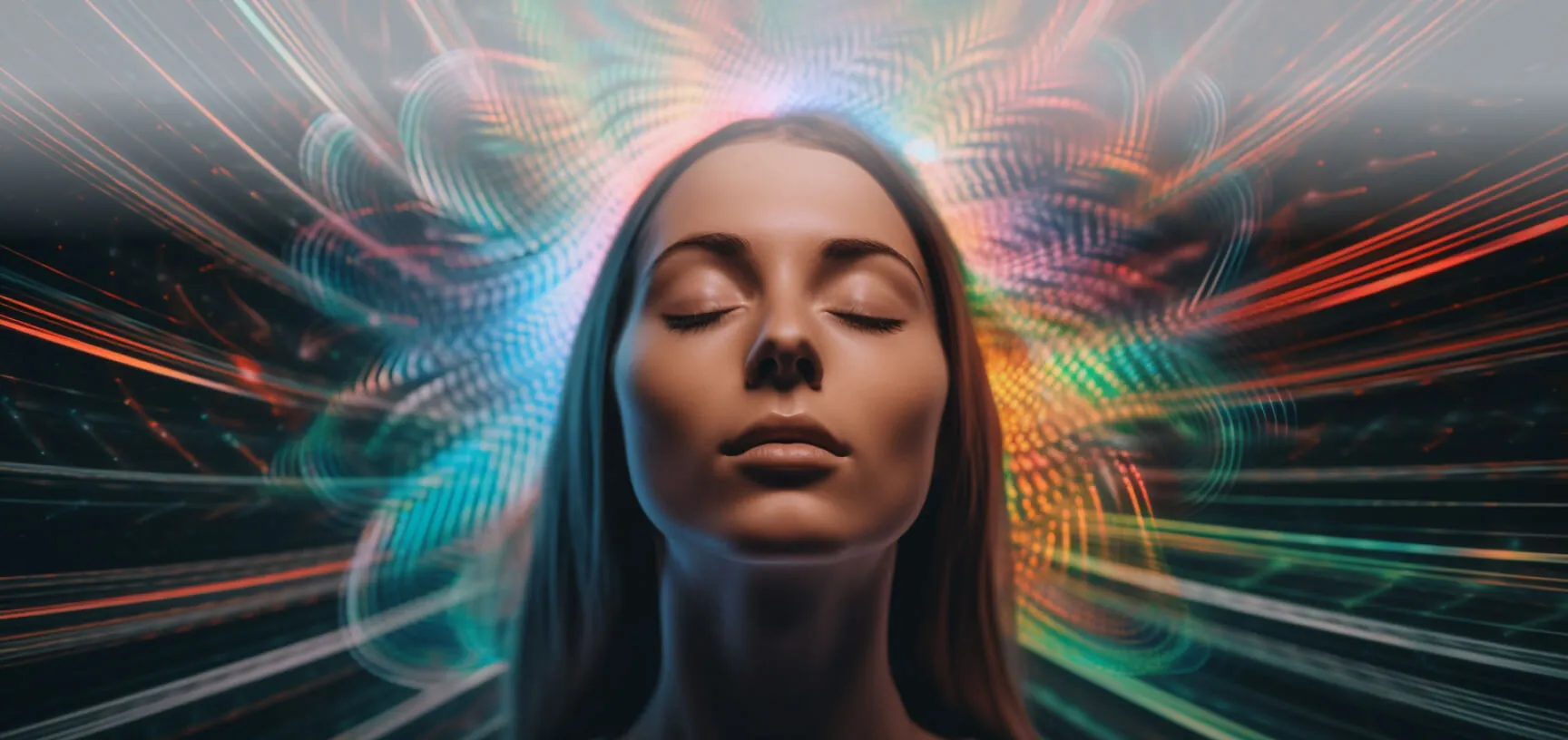
 David Hillier
David Hillier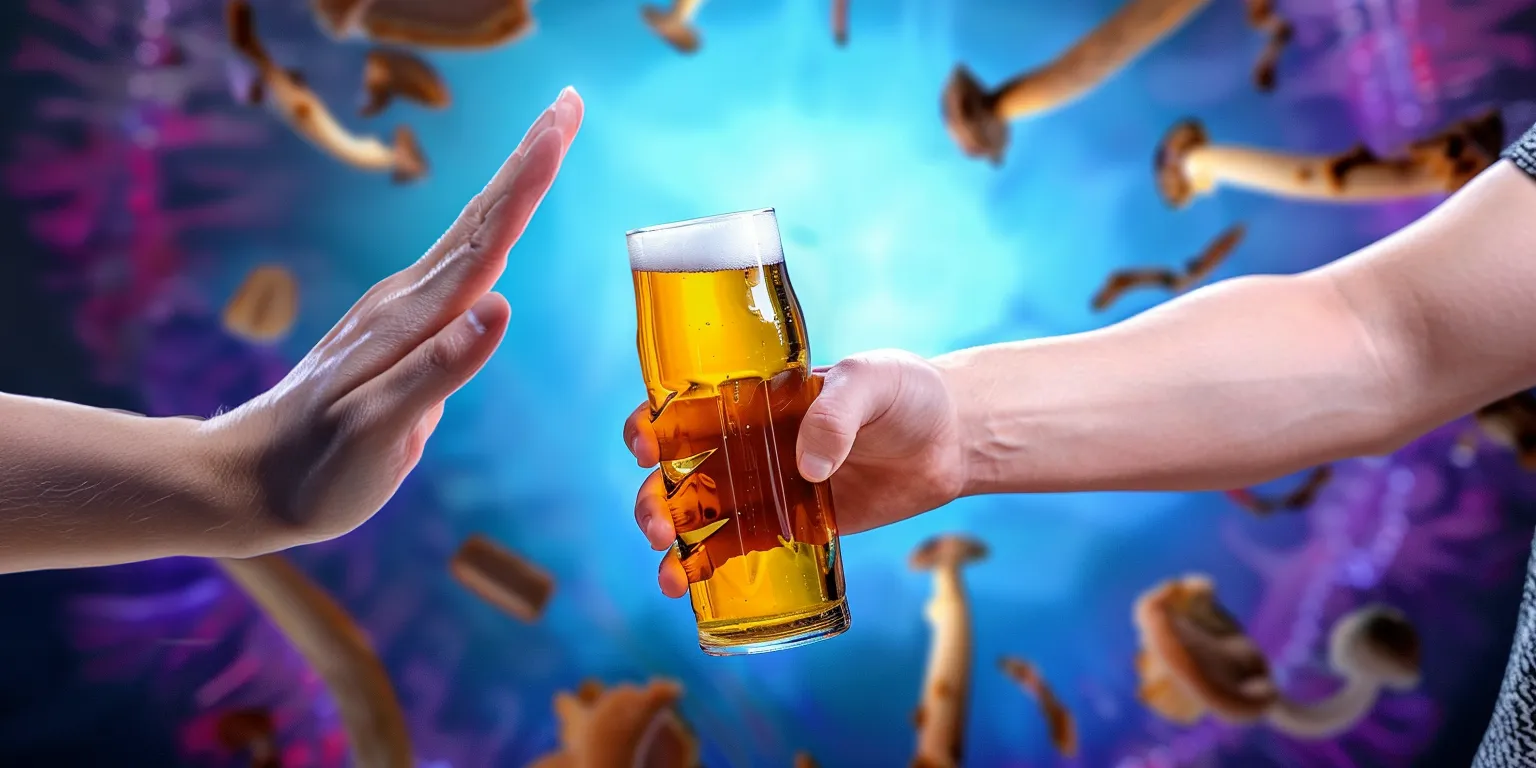
 David Connell
David Connell